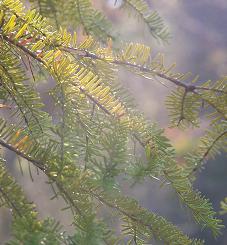
Ensure a Strong Future for Forests
September 2007
Read this issue of Greentips online
Forests provide habitat for more than half of all species living on land, help filter pollutants out of the air and water, and prevent soil erosion. They also play a major role in regulating global temperatures by absorbing heat-trapping carbon dioxide from the atmosphere and storing it in their cell walls. Unfortunately, the global benefits provided by trees are threatened by deforestation.
Earth loses more than 18 million acres of forestland every year—an area larger than Ireland—according to the United Nations Environment Programme (UNEP). When trees are cleared, their stored carbon is released back into the atmosphere. As a result, tropical deforestation is responsible for about 20 percent of total annual global warming emissions, making it second only to fossil fuels in terms of climate impact.
The best way to reduce emissions from tropical deforestation is to help ensure these trees are not cut down in the first place. Your purchasing decisions can play a role in this effort:
- Wood: When buying wood products, look for labels that indicate the wood comes from sustainably managed forests. There are several forest certification programs in place worldwide; see the related links for a description and comparison of each. For home improvement projects, you can avoid new wood products altogether by using reclaimed wood for floors and wood-free materials (such as composite resin boards) for decks or play areas.
- Coffee: Make your daily cup o’ joe using shade-grown coffee beans, which are grown under a forest canopy. In addition to supporting the preservation of forestlands, shade-grown coffee requires less fertilizer and pesticides to grow compared with coffee grown under full sun.
- Paper: While most U.S. papers are not made from tropical woods, reducing overall demand for virgin paper can have a global impact. You can support forest-friendly paper by buying paper made from sustainably harvested timber, a high percentage of post-consumer recycled content, or wood-free fibers such as kenaf.
Planting trees, while not a substitute for deforestation, can provide important climate benefits, especially in urban areas. In addition to absorbing carbon from the atmosphere, trees cool the air by providing shade and transpiring water from their leaves, which help reduce air conditioner use (and subsequent emissions from electricity production) during the summer months.
 Specialty Books & The National Arbor Day Foundation are replanting a forest in the United States and are allowing US colleges & universities vote for which one (which will then be named after the school). OU is currently in 46th place with 14 votes (go us!).
Specialty Books & The National Arbor Day Foundation are replanting a forest in the United States and are allowing US colleges & universities vote for which one (which will then be named after the school). OU is currently in 46th place with 14 votes (go us!).




























